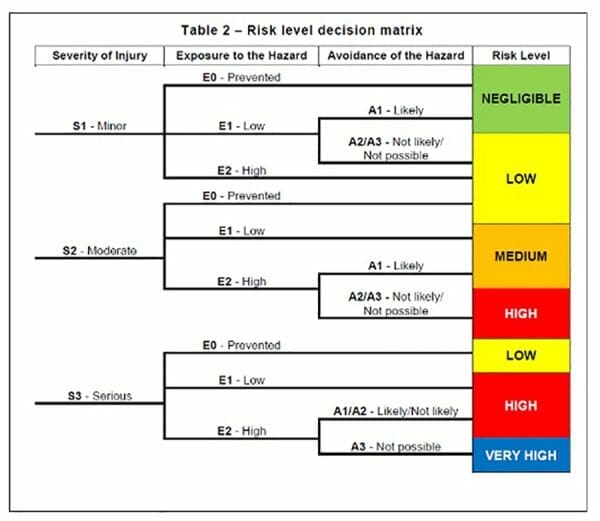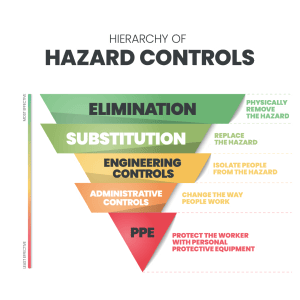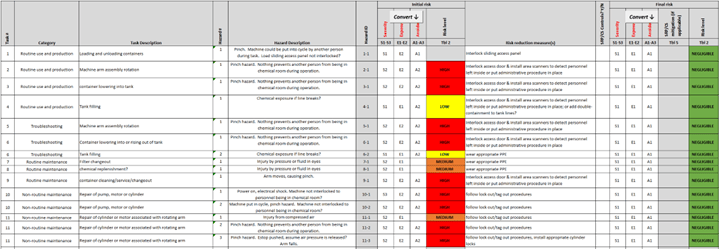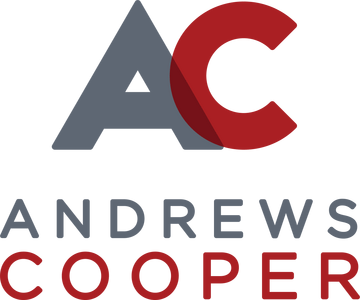An SRA is an objective and thorough process that enables us to define the tasks and functions related to the operation of your automation tooling and/or equipment in order to generate a detailed record of risks in order to de-risk equipment hazards. The insights gleaned from an SRA directly impact the engineering design of an automated tool so that all possible safety hazards are eliminated or mitigated.
Ensuring Objectivity for Effective De-Risking
The number one goal of integrating safety into the design of a tool and de-risking equipment systems is to minimize personnel risk. Secondary and tertiary risks impact the reliability of the equipment and associated consequences of functional failures.
Our objective is to determine what risks are associated with the operation of your equipment:
> Do operators of the tool have safety concerns that are not visible to management?
> Are there unintended environmental or personnel impacts to safety that create additional risk while operating the tool?
> Are there adequate alerts, alarms, and visual cues to warn personnel during operation of the tool?
> For existing or legacy equipment, have there been upgrades, modifications, or process changes that create new hazards to personnel during operation of the tool?
> Are there other limitations or constraints that impact the success or failure of the operation?
Uncovering Hidden Impacts that Create Safety Risks
As we analyze the tasks and their related hazards, we not only apply the SRA approach but also decades of experience uncovering hidden risks that might not otherwise be detected during the concept design phase:
> In addition to tasks related to the intended use of the tool, have the unintended misuses of the tool also been scrutinized? Where are the hidden risks created by misuse?
> Is there alignment on perceived risks among tool design engineers, managers, and operators? Are there any blind spots at the design level that are detectable by personnel who work with the tool daily? Are there any hidden perceptions about risks?
> What hazardous tasks involve are related to productivity? Are there functional failures triggered by safety risk factors? What are the effects of downtime? What are the hidden performance risks?
A good de-risking approach provides the clarity and objectivity you need to make educated decisions about reducing safety and performance risks throughout your equipment’s development journey.
De-Risking to Ensure Compliance with Industry Standards
Our templated SRA approach is derived from and harmonized with industry regulations, standards, and best practice methodologies, including:
> ISO 12100:2010 – Safety of machinery risk assessment and reduction principles
> ANSI RIA R15.06-2012 – Industrial robots and robot systems safety requirements standard
> ANSI RIA TR R15.306-2016 – Task-based risk assessment methodology for R15.06-2012
The ANSI standard on safety requirements for engineering industrial robots and robot systems was developed through a partnership with the Association for Advancing Automation (A3 – formerly Robotics Industries Association, or RIA).
Applying the ANSI standard and ISO risk assessment methodologies, we pinpoint all risks associated with the setup, operation, and maintenance of your automation equipment.
Identifying Severity, Exposure, and Avoidance to Determine Risk Level
Working from AC’s SRA template, we start by defining hazardous tasks associated with tool setup, operation, and maintenance.
Examining each task and its related risk factors, we score the safety hazards to identify the best risk reduction measure that corresponds to the risk level.

All tasks are rated for severity, exposure, and avoidance – crucial information which determines the risk level that drives our understanding and response to the safety risks and highest priority design challenges associated with your equipment.


Risk Level Determines Risk Reduction Measures
 Industry best practices ensure that the risk reduction measures are prioritized correctly for your equipment. The top priority is always to eliminate the risk through a modification to engineering or process design.
Industry best practices ensure that the risk reduction measures are prioritized correctly for your equipment. The top priority is always to eliminate the risk through a modification to engineering or process design.
When risks cannot be eliminated or substituted outright, other measures are prioritized, such as safeguarding, adding warnings and controls, or use of PPE.
For example, the standard for Robot Safety Risk Assessment (RIA TF R15.306-2014) includes a clear path to define, reduce, and verify risk reduction measures. Our approach follows the same workflow to ensure verification and validation of risk reduction measures at the end of the process.
 Based on the level of severity and probability of occurrence, clear risk reduction measures are identified – crucial information that enables objective decisions about design improvements, protective barriers and equipment, as well as effective safety instructions for operators and maintenance technicians.
Based on the level of severity and probability of occurrence, clear risk reduction measures are identified – crucial information that enables objective decisions about design improvements, protective barriers and equipment, as well as effective safety instructions for operators and maintenance technicians.
The outcome of the analysis is a prioritized list of appropriate risk reduction methods assigned for all hazardous tasks related to your specific manufacturing automation equipment and process:
1. Eliminate risk through the design or a retrofit solution.
2. Reduce risk by adding safeguards to the tool.
3. Protect personnel from risk with HMI alerts, placards/signs, training, and PPE.
https://www.keyence.com/ss/products/safetyknowledge/about/risk/
Your Custom Matrix for De-Risking Equipment Hazards
Once the SRA process has been completed, our engineers build a custom risk matrix for your equipment.
From your risk matrix, we can quickly identify your equipment’s initial risk level, our risk reduction measures, and a final risk level after all risk reduction measures have been implemented.

The risk matrix guides design improvements now and also provides a history that can be referenced in future if your equipment needs to be upgraded or when you’re preparing to scale your manufacturing processes.


